9 Japandi Living Room Decor Ideas for a Minimal yet Cozy Space
Japandi style is the perfect marriage of Japanese minimalism and Scandinavian coziness, blending clean lines, natural materials, and warm textures to create a serene living space. This design approach has become increasingly popular for its ability to turn a living room into a calming retreat while maintaining functionality and style. The beauty of Japandi lies in its balance — the simplicity of Japanese interiors meets the comfort of Scandinavian design, resulting in a home that feels both minimal and inviting. The following nine ideas will help you bring this timeless, calming aesthetic into your own living room.
1. Start with a Neutral Color Palette
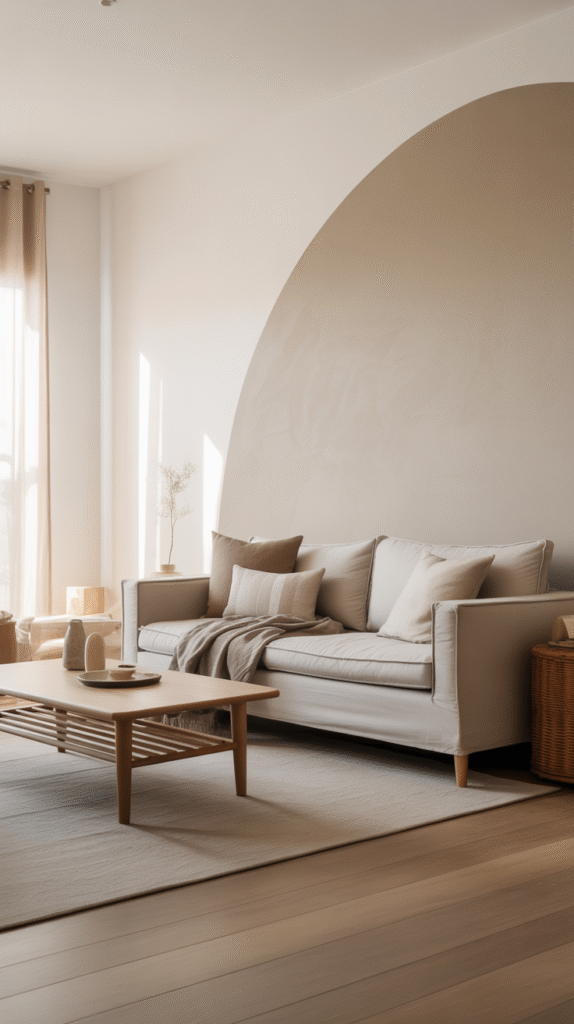
A Japandi living room begins with a soft and soothing neutral color palette that sets the tone for the entire space. Warm whites, gentle beiges, and muted grays create a backdrop that feels airy and open while allowing the natural textures to shine. Subtle earthy tones can be layered through accent pieces like cushions, rugs, and pottery to add warmth without overpowering the minimalist foundation. This restrained palette creates a calming atmosphere and allows every design detail to feel intentional.
2. Incorporate Natural Materials
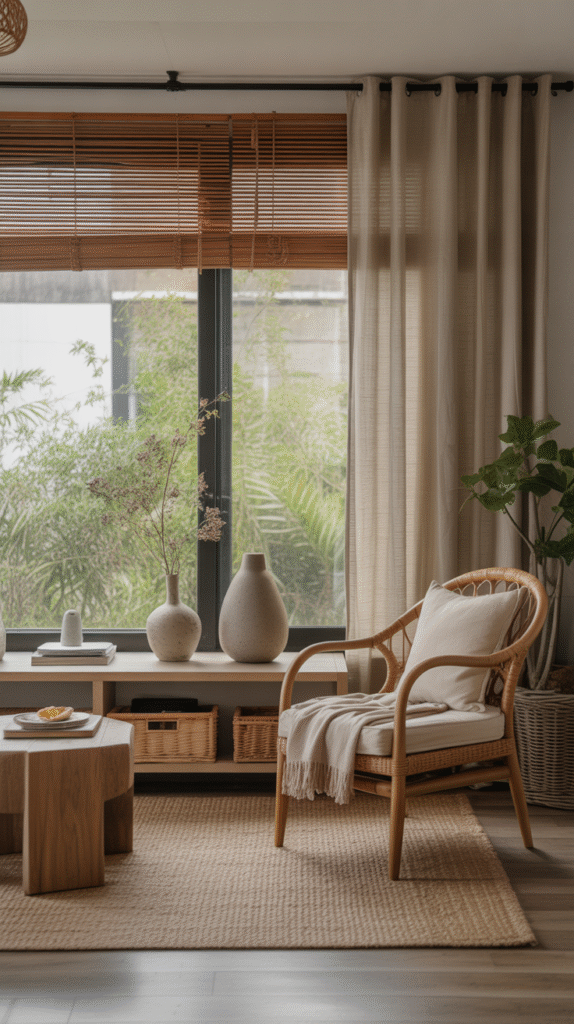
Natural materials are at the heart of Japandi interiors, bringing a grounded, organic feel to the space. Furniture crafted from light and dark woods offers visual balance, while rattan, bamboo, and linen add texture and warmth. A woven rug underfoot, linen curtains at the window, and bamboo blinds filtering sunlight can instantly make the room feel more inviting. These materials not only look beautiful but also age gracefully, adding depth and character over time.
3. Embrace Minimalist Furniture
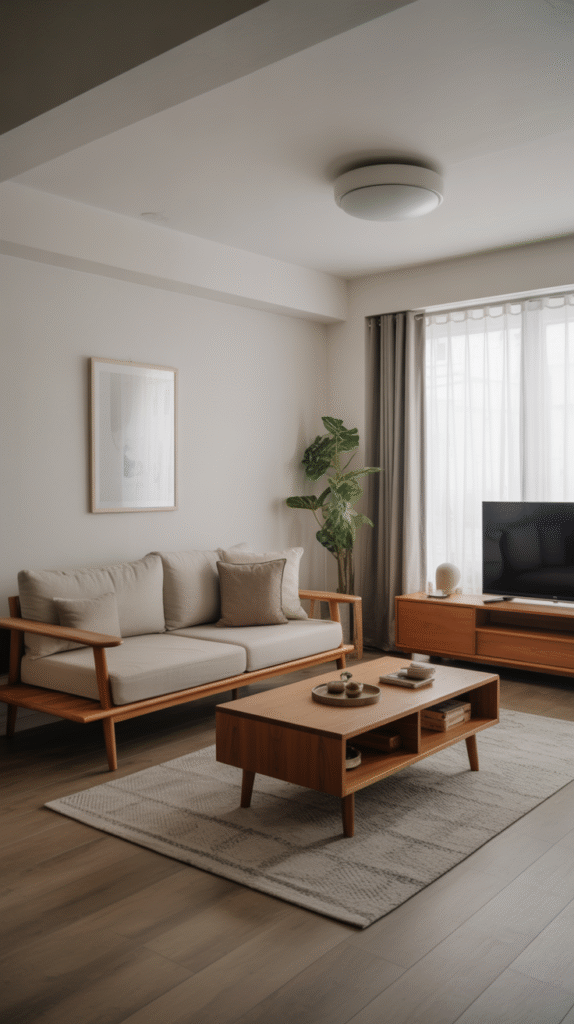
Furniture in a Japandi living room should be low-profile, functional, and free of unnecessary ornamentation. A sleek wooden sofa with neutral cushions, a hidden storage coffee table, and a simple console keep the space uncluttered while providing everyday comfort. The clean lines nod to Japanese design principles, while the soft textiles and ergonomic forms ensure the Scandinavian touch of coziness remains present. This combination keeps the room looking effortlessly stylish yet practical for daily living.
4. Add Textural Layers
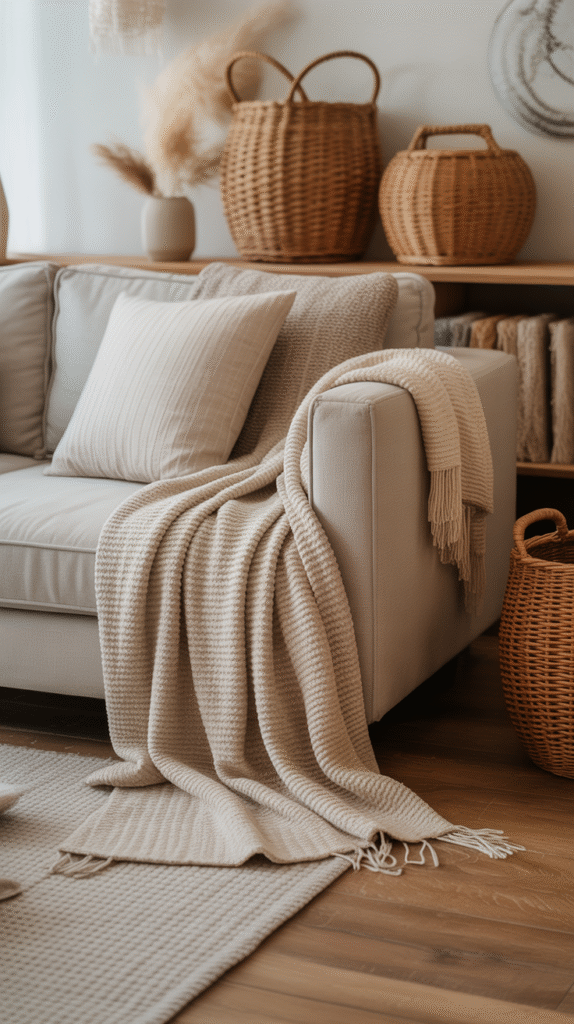
While Japandi design is rooted in minimalism, it never feels cold thanks to the careful layering of textures. A knitted throw draped over a linen sofa, a wool rug on the floor, and cotton or linen cushions can instantly add depth and comfort to the space. These tactile elements soften the crisp lines of minimalist furniture and create an environment that feels welcoming. Even in a restrained color palette, the mix of textures makes the room visually engaging.
5. Bring in Greenery
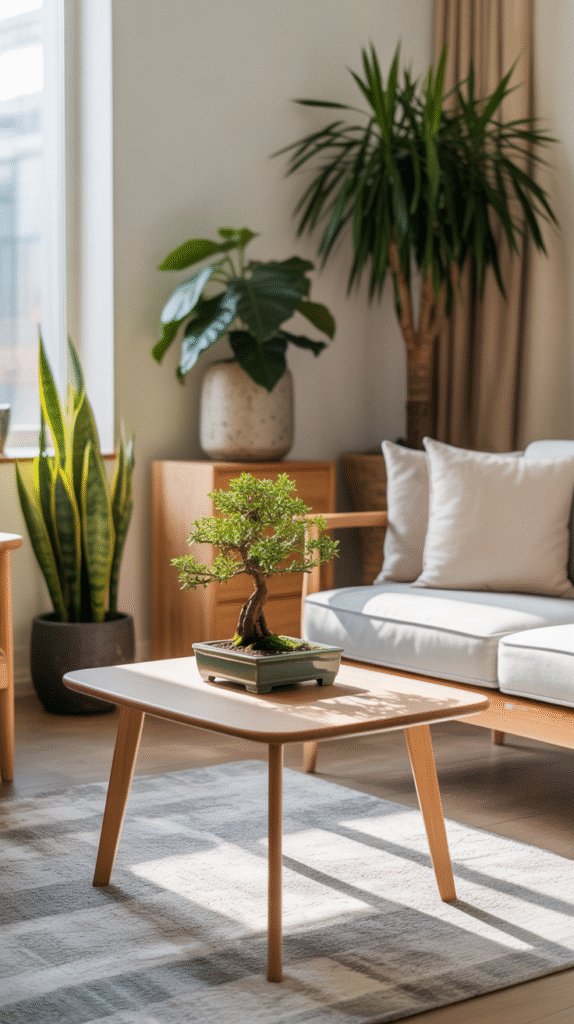
Plants play an important role in bringing life and freshness to a Japandi living room. A small bonsai tree on the coffee table, a snake plant in a ceramic pot, or a potted palm in the corner can add vibrancy without overwhelming the space. The greenery provides a natural contrast to the neutral tones and complements the organic materials used in the furniture and decor. These living elements also enhance the calming atmosphere that Japandi design is known for.
6. Use Warm, Soft Lighting

Lighting in a Japandi living room is designed to create a gentle and inviting atmosphere. Paper lanterns, floor lamps with fabric shades, and candles can cast a soft, warm glow across the space. This diffused light enhances the natural textures of wood and textiles while making the room feel more intimate during the evening hours. Rather than relying on harsh overhead lights, the focus is on creating layers of light that feel calm and comforting.
7. Incorporate Functional Decor

In Japandi interiors, every decorative element serves a purpose. Ceramic vases can hold fresh greenery, woven baskets provide storage while adding texture, and minimalist wall shelves display a curated selection of books or ceramics. These pieces are carefully chosen not just for their beauty but for their functionality, ensuring that the room remains clutter-free while still feeling personal and lived-in.
8. Keep Clutter to a Minimum

A Japandi living room thrives on open space and intentional design. By keeping only what is necessary and meaningful, the room maintains a sense of serenity and calm. This means avoiding overcrowding with furniture or accessories and instead letting a few well-chosen pieces take center stage. The result is a space where you can truly relax and breathe without visual distractions.
9. Add Subtle Japanese & Scandinavian Accents
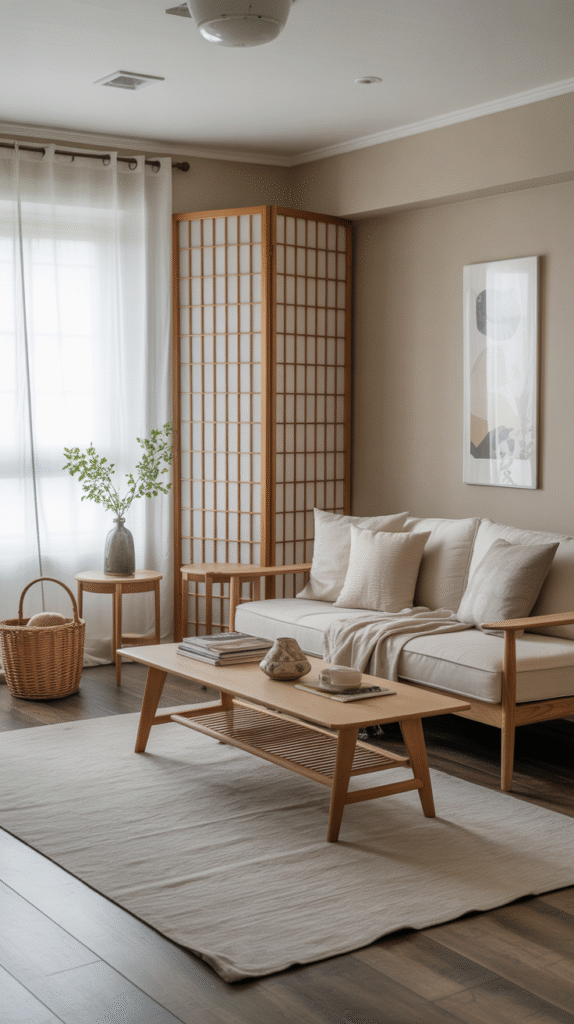
To fully embrace the Japandi style, incorporate signature elements from both cultures in a balanced way. A shoji screen in the corner, a tatami mat beneath the coffee table, or Nordic-inspired textiles on the sofa can create a seamless blend of influences. The key is subtlety — these accents should complement the overall aesthetic rather than compete for attention, resulting in a harmonious, unified space.
Conclusion

Japandi design is more than just a decor trend — it is a lifestyle that celebrates simplicity, functionality, and the beauty of natural materials. By combining the elegance of Japanese minimalism with the warmth of Scandinavian coziness, you can create a living room that feels like a peaceful retreat. With thoughtful choices in color, furniture, lighting, and decor, your home can become a calming sanctuary where every element has meaning and purpose.






